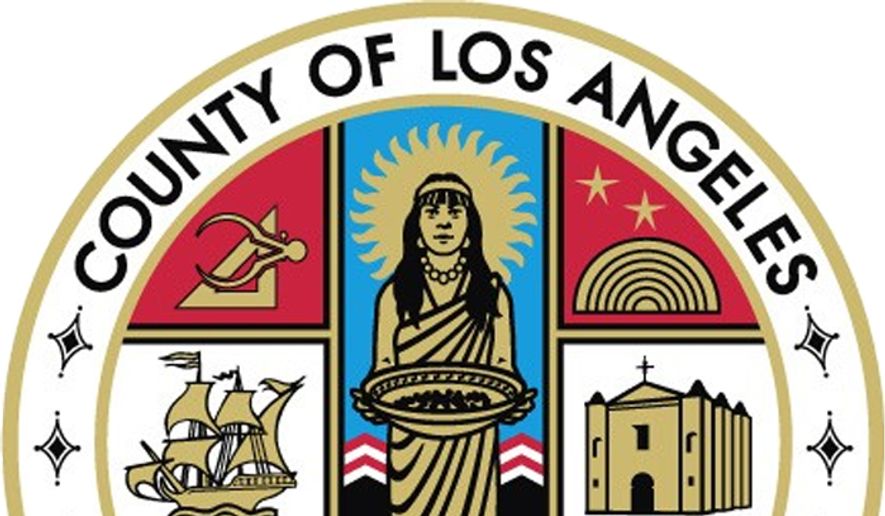Restoring a tiny Christian cross to the Los Angeles County seal is unconstitutional because it places the county’s “power, prestige and purse” behind one religion, a federal judge ruled Thursday.
U.S. District Court Judge Christina A. Snyder’s 55-page decision was a victory for the American Civil Liberties Union, which sued in 2014 after the Los Angeles County Board of Supervisors voted to reinstate the cross.
“It carries with it an aura of prestige, authority and approval,” the judge said in her ruling. “By singling out the cross for addition to the seal, the County necessarily lends its prestige and approval to a depiction of one faith’s sectarian imagery.”
Key to the judge’s decision was the board’s 3-2 vote in 2014 to bring back the cross after it was removed in 2004 in order to avoid a lawsuit. The California Constitution’s “no aid” clause forbids the expenditure of public dollars to further a “sectarian purpose.”
“[Plaintiffs] challenge the County’s decision to add a cross to the seal that — unlike its predecessor, the 1957 seal — has contained no sectarian symbols for nearly a decade,” said the order. “This distinction, and the foregoing history of the depiction of a cross on the County seal, is significant, if not critical, as it informs the Court’s assessment of whether a specific ’grant’ or ’appropriation’ has been made for a ’sectarian’ purpose.”
Brad Dacus, president of the conservative Pacific Justice Institute in Sacramento, criticized the ruling, noting that courts have upheld the constitutionality of the phrases “In God We Trust” on currency and “one nation under God” in the Pledge of Allegiance.
“The county seal’s inclusion of the cross has irrefutable historic significance and a consequential secular purpose, and therefore should have been upheld as constitutional,” said Mr. Dacus, whose organization was not involved in the lawsuit against the board.
In a joint statement, attorney Linda M. Burrow and Hector Villagra, executive director of the ACLU of Southern California, praised the court’s decision.
“We are heartened by the court’s ruling because it recognizes that Los Angeles is a diverse county comprised of adherents of hundreds of faiths as well as non-believers, all of whom are entitled to be treated with equal dignity by their government,” they said. “The placement of the cross on the official county seal promotes one religious sect above others and denies the principle that government represents all of the people, not just those who follow a particular faith.”
The cross has been the subject of long-standing debate in Los Angeles County. After the cross was removed as part of a 2004 update, thousands of citizens signed a petition to compel the board to restore the cross to its previous location atop a drawing of the San Gabriel Mission.
The round seal, featuring an American Indian woman with a basket of fruit, the Hollywood Bowl and a Spanish galleon, can be found on county buildings, sheriff’s vehicles, uniform patches and stationery, among other items.
The judge’s order grants a permanent injunction against adding the cross to the seal. The cost of redoing and replacing the emblem has been estimated at about $700,000.
Mr. Dacus called the cross a “valuable reminder of the important role played by missions,” which is taught in the state’s public schools, and noted that many California county, city and street names are named after missions or have religious connotations.
“There’s no evidence that anyone in developing this seal had any religious purpose, much less anticipated any religious effect from the presence of the cross, which is one of the seal’s many historical aspects,” Mr. Dacus said.
The original official name of Los Angeles was “El Pueblo de Nuestra Senora, la Reina de los Angeles,” or “the Town of Our Lady, the Queen of the Angels,” referring to the Virgin Mary.
The board did not announce publicly Thursday whether it would appeal the decision.
• Valerie Richardson can be reached at vrichardson@washingtontimes.com.




Please read our comment policy before commenting.